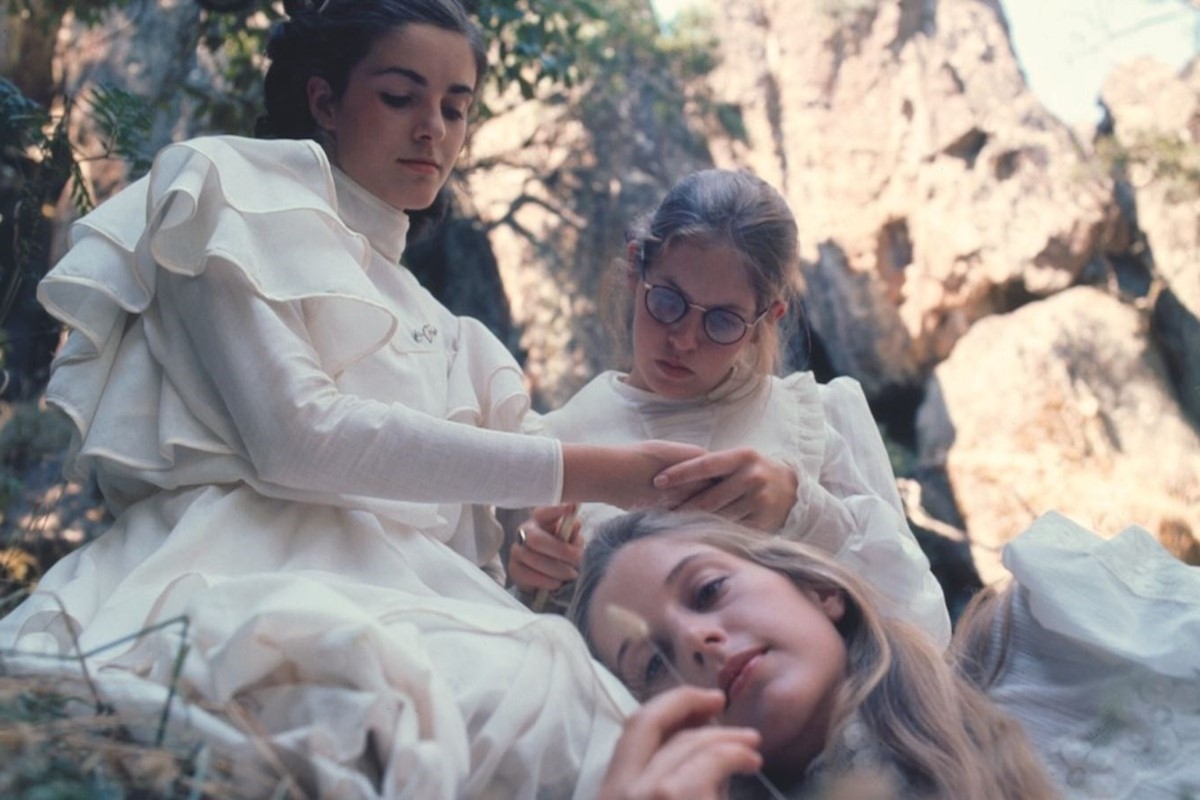
Rewrite
目次
- 1 Here, we unpack five internet subcultures – from coquette to balletcore – who owe their aesthetic to the 1975 cult film
- 2 Coquette
- 3 Sad Girl
- 4 Soft Girl
- 5 Balletcore
- 6 Cottagecore
- 7 Here, we unpack five internet subcultures – from coquette to balletcore – who owe their aesthetic to the 1975 cult film
- 8 Coquette
- 9 Sad Girl
- 10 Soft Girl
- 11 Balletcore
- 12 Cottagecore
Here, we unpack five internet subcultures – from coquette to balletcore – who owe their aesthetic to the 1975 cult film
Set in rural Australia in 1900, Picnic at Hanging Rock is an enduring mystery that poses a shocking question: what does it matter if girls vanish from the face of the Earth? A breakthrough film for Peter Weir, who went on to direct The Truman Show and Master and Commander, the film adapts author Joan Lindsay’s tale of teenage pupils from a female boarding school who go missing on a trip into the outback.
Directed with a gossamer touch by Weir, its haunting mix of beauty and looming menace has captured many, from Chloë Sevigny to Sofia Coppola (whose The Virgin Suicides lifts its mood wholesale). And if some were enraged that there is no conclusion to the mystery, the message seems clear enough considering that Picnic at Hanging Rock was based on a novel written by a woman in the 60s: these are ‘just girls’. In Edwardian-era Australia, that means their fate was either to be married off or else become spinsters, maids or teachers serving the patriarchy; they were never destined to become important members of society.
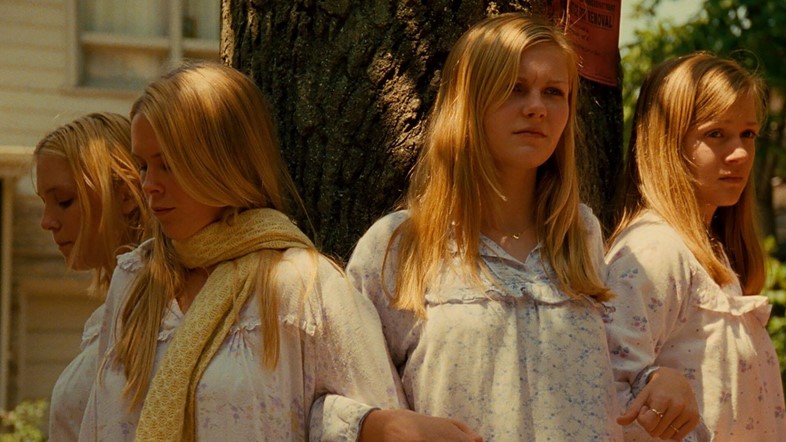
Before their disappearance, we see the girls grooming each other with flower water and reciting poetry, the camera lovingly caressing their movements with a dreamy, softcore aesthetic. It’s as if they’re the most precious beings on Earth, which makes the townsfolks’ ignorance of their subsequent whereabouts even harsher. Shortly before they vanish, Marion declares, “A surprising number of human beings are without purpose.” In a sacrificial moment, the girls then lie down beside the rock, accepting their fate. What remains is an image of beauty, poetry, assembled altars, loosely braided hair and the iconic lace dresses the girls all wear; a perfect moment of youth that abruptly ends and has inspired numberless films, fashion shows and Pinterest boards since.
Here, we look into the internet subcultures that draw on this evergreen tale of Botticelli angels gone astray.
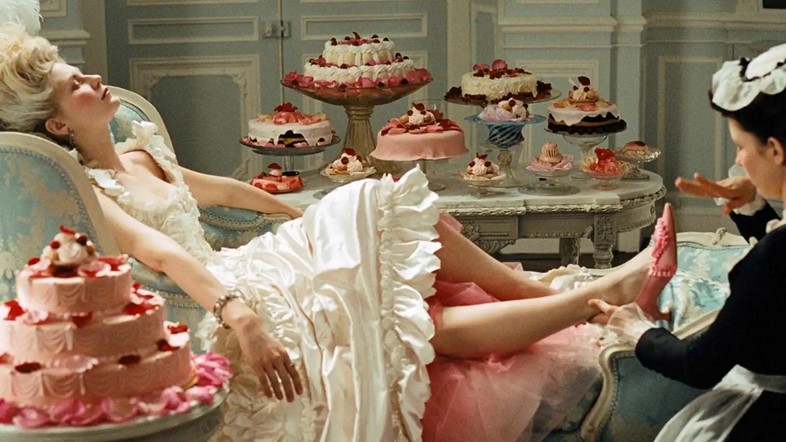
Coquette
Marie Antoinette is cited as the initial source of inspiration for the coquette look, which uses lace, bows and ribbons as adornments. Being coquettish means being flirtatious, but the ruffled style keeps us at a respectful distance. A seductive relic from the Victorian era, the coquette resurfaced in the 2010s on Tumblr and later in the 2020s on TikTok. The look has given rise to even more niche subcultures, including American coquette, vintage dollette, fairy coquette and gloomy dollette. But while a femme fatale-ish undercurrent is a constant, the focus is always on confinement: The coquette girl reads Jane Austen and Lolita, listens to Lana Del Rey’s Born to Die, and her typical habitat is a frilly bedroom where she finds comfort away from modern society.
Sad Girl
The girls in Picnic at Hanging Rock exist between an unforgiving, harsh reality and their dreams of experiencing love and other whispered feelings they only seem to know from poetry. Similarly, the modern-day sad girl sports a breeding obsession while she dwells in her inner fantasy world, wallowing performatively while surrounding herself with an artfully curated clutter of make-up, books, scribbled poems, jewellery, pillows and meaningful keepsakes. She reads Plath, Poe and Baudelaire, all of whom find beauty in pain, death and the beyond. Sad-girl theory was introduced by artist Audrey Wollen in 2015, and can be seen as a way to express identity trauma as a style. An aesthetic linked to feminine pain that has been labelled ‘dissociative feminism’, it focuses on self-interested behaviours and can seem antisocial but that, of course, is the whole point.
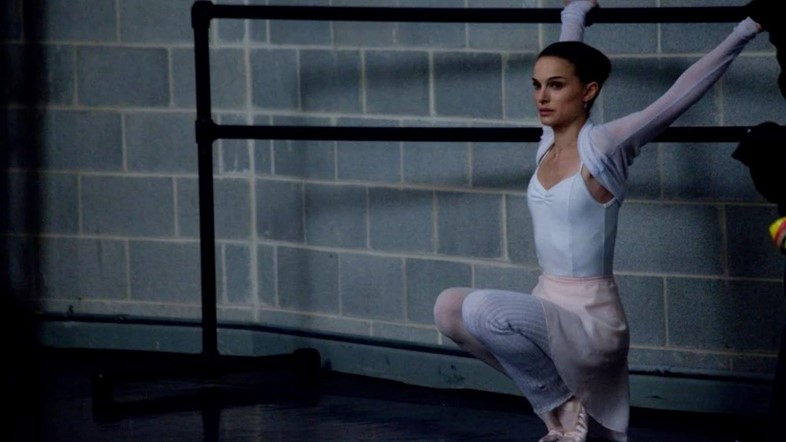
Soft Girl
More than just a look, the soft girl is a full-blown lifestyle marked by a gentle approach to the self and aspirations towards a carefree, frankly rather wealthy setting. A soft girl embraces the romantic, hazy image of a feminine look with pastel colours, flushed cheeks and barely-there make-up, with self-care, breakfast smoothies and pilates. She is the opposite of the 2010 #GirlBoss craze that produced female CEOs who hustled their way to the top, like Glossier’s Emily Weiss or Sophia Amoruso. The soft girl has no desire to hustle and prefers to live in harmony with her 28-day cycle, away from stress or burnout. Centred around self-care and traditional values, the slow homemaker’s life is linked to trad-wifes and is therefore criticised for its association with weakness and the promotion of a limiting role model. However, the overexposed soft exterior is simultaneously mocking the feminine ideal simply by living it.
Balletcore
In Dario Argento’s Suspiria, which came out the same year as Picnic at Hanging Rock, ballerinas wear lace dresses and capes draped over their shoulders. In Picnic at Hanging Rock, we see the girls taking ballet classes to piano music and one girl is scolded in particular for her hunched posture. Later sported by Natalie Portman in Black Swan and Sarah Jessica-Parker in the Sex & the City intro, balletcore is a fashion trend that’s been popular since 2022 and incorporates ballet staples into everyday clothing. Cosy and practical layers of leggings, tights, leg warmers, bodysuits, skirts and classic cache-coeur wrap tops are essential. The mix of transparency, sheer, silken and woolly fabrics combined with the ballet bun gives the I-just-got-out-of-practice-look. Maison Margiela Tabi ballet flats have become a must-have, with new Gucci and Ferragamo versions following in their footsteps. Rather than focusing on the fragile femininity à la soft girl, balletcore conveys strength and controlled inner power. It is, after all, a sport – and from what we’ve seen on screen, not as delicate as it appears on stage.
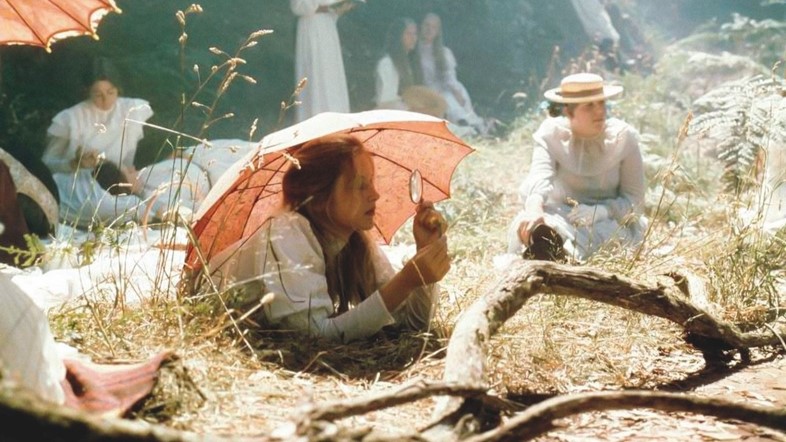
Cottagecore
Another fantasy lifestyle closely linked to Marie Antoinette is cottagecore, an aesthetic that romanticises rural life. Of course, the queen of France had a rather idyllic idea of farm life when she toyed with the idea of being a milkmaid, so her little fake village on the grounds of Versailles had little to do with a real farm but was rather an exquisitely designed, Disney-esque depiction of it. The cottagecore gal is likewise all about fantasy, craving a leisurely rural life surrounded by meadows and a large farmhouse kitchen with a view of horses on the horizon. The trend originated in the 2010s and was repopularised during the pandemic as a form of escapism. As another privileged lifestyle, it has little to do with actual manual labour and getting your hands dirty. Instead, cottagecore girlies engage in plenty of gardening, sewing, baking and frolicking with wicker baskets. Also called countrycore or farmcore, its influence can be seen in Marc Jacobs perfume ads that gloss over the central tension in these scenes: while the girls are enjoying their apples and treats from their picnic baskets, draped in boho-esque dresses on the grass, the film teaches us that there are “poisonous ants and snakes” hidden in this sunshine-drenched Eden.
Picnic at Hanging Rock is on show at the BFI and nationwide starting from February 21st in a 4K restoration of the director’s cut.
in HTML format, including tags, to make it appealing and easy to read for Japanese-speaking readers aged 20 to 40 interested in fashion. Organize the content with appropriate headings and subheadings (h1, h2, h3, h4, h5, h6), translating all text, including headings, into Japanese. Retain any existing
tags from
Here, we unpack five internet subcultures – from coquette to balletcore – who owe their aesthetic to the 1975 cult film
Set in rural Australia in 1900, Picnic at Hanging Rock is an enduring mystery that poses a shocking question: what does it matter if girls vanish from the face of the Earth? A breakthrough film for Peter Weir, who went on to direct The Truman Show and Master and Commander, the film adapts author Joan Lindsay’s tale of teenage pupils from a female boarding school who go missing on a trip into the outback.
Directed with a gossamer touch by Weir, its haunting mix of beauty and looming menace has captured many, from Chloë Sevigny to Sofia Coppola (whose The Virgin Suicides lifts its mood wholesale). And if some were enraged that there is no conclusion to the mystery, the message seems clear enough considering that Picnic at Hanging Rock was based on a novel written by a woman in the 60s: these are ‘just girls’. In Edwardian-era Australia, that means their fate was either to be married off or else become spinsters, maids or teachers serving the patriarchy; they were never destined to become important members of society.

Before their disappearance, we see the girls grooming each other with flower water and reciting poetry, the camera lovingly caressing their movements with a dreamy, softcore aesthetic. It’s as if they’re the most precious beings on Earth, which makes the townsfolks’ ignorance of their subsequent whereabouts even harsher. Shortly before they vanish, Marion declares, “A surprising number of human beings are without purpose.” In a sacrificial moment, the girls then lie down beside the rock, accepting their fate. What remains is an image of beauty, poetry, assembled altars, loosely braided hair and the iconic lace dresses the girls all wear; a perfect moment of youth that abruptly ends and has inspired numberless films, fashion shows and Pinterest boards since.
Here, we look into the internet subcultures that draw on this evergreen tale of Botticelli angels gone astray.

Coquette
Marie Antoinette is cited as the initial source of inspiration for the coquette look, which uses lace, bows and ribbons as adornments. Being coquettish means being flirtatious, but the ruffled style keeps us at a respectful distance. A seductive relic from the Victorian era, the coquette resurfaced in the 2010s on Tumblr and later in the 2020s on TikTok. The look has given rise to even more niche subcultures, including American coquette, vintage dollette, fairy coquette and gloomy dollette. But while a femme fatale-ish undercurrent is a constant, the focus is always on confinement: The coquette girl reads Jane Austen and Lolita, listens to Lana Del Rey’s Born to Die, and her typical habitat is a frilly bedroom where she finds comfort away from modern society.
Sad Girl
The girls in Picnic at Hanging Rock exist between an unforgiving, harsh reality and their dreams of experiencing love and other whispered feelings they only seem to know from poetry. Similarly, the modern-day sad girl sports a breeding obsession while she dwells in her inner fantasy world, wallowing performatively while surrounding herself with an artfully curated clutter of make-up, books, scribbled poems, jewellery, pillows and meaningful keepsakes. She reads Plath, Poe and Baudelaire, all of whom find beauty in pain, death and the beyond. Sad-girl theory was introduced by artist Audrey Wollen in 2015, and can be seen as a way to express identity trauma as a style. An aesthetic linked to feminine pain that has been labelled ‘dissociative feminism’, it focuses on self-interested behaviours and can seem antisocial but that, of course, is the whole point.

Soft Girl
More than just a look, the soft girl is a full-blown lifestyle marked by a gentle approach to the self and aspirations towards a carefree, frankly rather wealthy setting. A soft girl embraces the romantic, hazy image of a feminine look with pastel colours, flushed cheeks and barely-there make-up, with self-care, breakfast smoothies and pilates. She is the opposite of the 2010 #GirlBoss craze that produced female CEOs who hustled their way to the top, like Glossier’s Emily Weiss or Sophia Amoruso. The soft girl has no desire to hustle and prefers to live in harmony with her 28-day cycle, away from stress or burnout. Centred around self-care and traditional values, the slow homemaker’s life is linked to trad-wifes and is therefore criticised for its association with weakness and the promotion of a limiting role model. However, the overexposed soft exterior is simultaneously mocking the feminine ideal simply by living it.
Balletcore
In Dario Argento’s Suspiria, which came out the same year as Picnic at Hanging Rock, ballerinas wear lace dresses and capes draped over their shoulders. In Picnic at Hanging Rock, we see the girls taking ballet classes to piano music and one girl is scolded in particular for her hunched posture. Later sported by Natalie Portman in Black Swan and Sarah Jessica-Parker in the Sex & the City intro, balletcore is a fashion trend that’s been popular since 2022 and incorporates ballet staples into everyday clothing. Cosy and practical layers of leggings, tights, leg warmers, bodysuits, skirts and classic cache-coeur wrap tops are essential. The mix of transparency, sheer, silken and woolly fabrics combined with the ballet bun gives the I-just-got-out-of-practice-look. Maison Margiela Tabi ballet flats have become a must-have, with new Gucci and Ferragamo versions following in their footsteps. Rather than focusing on the fragile femininity à la soft girl, balletcore conveys strength and controlled inner power. It is, after all, a sport – and from what we’ve seen on screen, not as delicate as it appears on stage.

Cottagecore
Another fantasy lifestyle closely linked to Marie Antoinette is cottagecore, an aesthetic that romanticises rural life. Of course, the queen of France had a rather idyllic idea of farm life when she toyed with the idea of being a milkmaid, so her little fake village on the grounds of Versailles had little to do with a real farm but was rather an exquisitely designed, Disney-esque depiction of it. The cottagecore gal is likewise all about fantasy, craving a leisurely rural life surrounded by meadows and a large farmhouse kitchen with a view of horses on the horizon. The trend originated in the 2010s and was repopularised during the pandemic as a form of escapism. As another privileged lifestyle, it has little to do with actual manual labour and getting your hands dirty. Instead, cottagecore girlies engage in plenty of gardening, sewing, baking and frolicking with wicker baskets. Also called countrycore or farmcore, its influence can be seen in Marc Jacobs perfume ads that gloss over the central tension in these scenes: while the girls are enjoying their apples and treats from their picnic baskets, draped in boho-esque dresses on the grass, the film teaches us that there are “poisonous ants and snakes” hidden in this sunshine-drenched Eden.
Picnic at Hanging Rock is on show at the BFI and nationwide starting from February 21st in a 4K restoration of the director’s cut.
and integrate them seamlessly into the new content without adding new tags. Ensure the new content is fashion-related, written entirely in Japanese, and approximately 1500 words. Conclude with a “結論” section and a well-formatted “よくある質問” section. Avoid including an introduction or a note explaining the process.


